There are several fish species with big lips. Fish use big lips for different purposes. Some ichthyologists( who study fish) suggest that big lips help hunt or scrape algae from the surfaces to eat.
Here is a brief discussion about the lips fish. You will find a variety of species having big lips and how their large lips are contributing to their life.
Some of the most important reasons behind the evolution of big lips in different fish are given below.
- Predation
Fish use their oral cavity to hold, process, and even catch the prey. So, their lips are adapted to eat and hunt their prey with their large size.
- Interaction
Many fish have lip-to-lip contact with each other. They contact through their lips to compete and maintain dominance over other fish. This can be one of the reasons that they have big lips.
- Reproductive Purpose
Fish somehow use their lips in reproduction. The fish with big lips can easily hunt their prey and can show dominance for choosing their mates. Furthermore, big lips are helpful in carrying eggs and fry.
Here are some popular big lips fish.
Koi
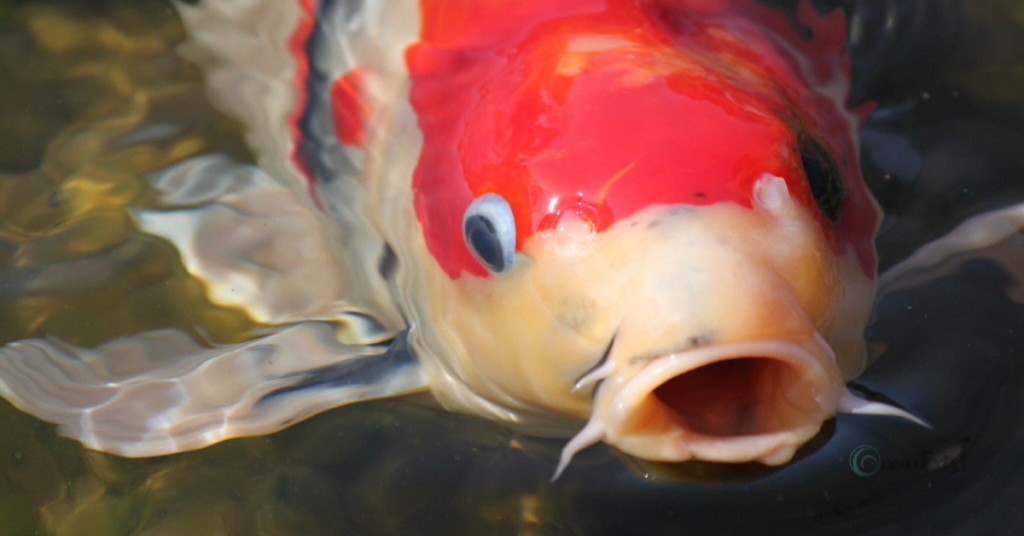
Koi fish is a popular big-lip fish, which is a subspecies of common carp. The name Koi is a Japanese word that means luck, prosperity, and growth. They are originally native to East Asia, Australia, and Europe. They are famous pet fish because of their beautiful colors.
They have an interesting behavior. Koi fish open and close their mouths, which reflects that they are hungry. Koi fish that have good health can live for about 40 years.
Their mouths are toothless, while pharyngeal teeth are present to help them grind their food.
- Scientific Name: Cyprinus rubrofuscus
- Diet: Omnivorous
- Size: 1-3 feet
- Origin: Japan
- Type: Protrusible mouth
Piranha
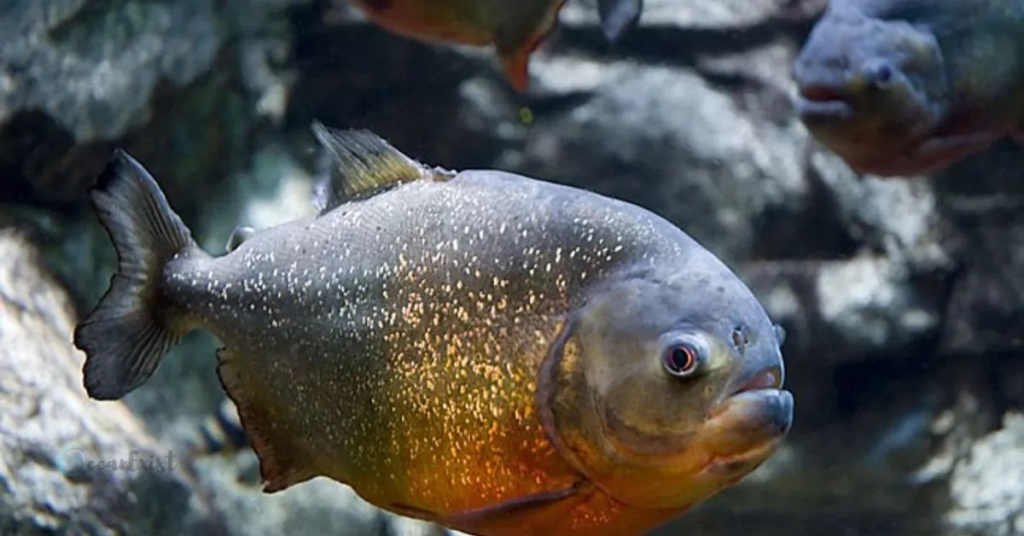
Two Tupi words, “Pira and Nya”, combined to make the Piranha, which means “biting fish”. They are found in the Amazon River in South America.
Piranha have an aggressive nature and attack their prey with their big lips and spiky teeth. Moreover, Piranha fish have strong jaws. Twenty or more sharp teeth and jaws help them to strip the flesh of their prey. They are omnivores in nature and can eat snails, fish, aquatic animals, plants, seeds, and several fruits.
Piranha can live for 25 years, and its weight can grow to 8 pounds. These are of several colors but mainly red and brown.
- Scientific Name: Pygocentrus nutterer
- Diet: Carnivores
- Size: 18 Inches
- Origin: South America
Napoleon Fish
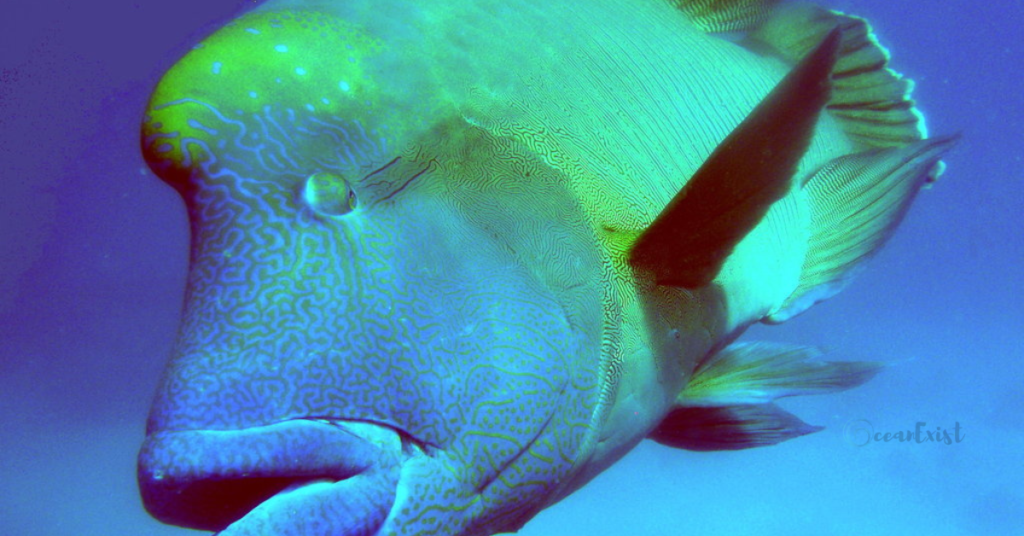
Napoleon fish have ray fins, wide mouths, and large foreheads. Their bodies are also ray-finned. These are famous for their gigantic lips. These are also called humphead wrasse or Napoleon wrasse. Their bodies have a range of colors, from dark green to bright blue.
Humphead wrasse grows slowly but can grow up to 400 pounds. Their maximum age is 30 years. They are voracious eaters and eat smaller fish, shrimps, crabs, worms, and other small animals in water.
Napoleon fish attract their mates through their large lips as large lips reflect their good health and strong genes for hunting. These are also very tasty and are vulnerable to over-hunting.
- Scientific Name: Cheilinus undulatus
- Diet: Omnivores
- Size: 6 Feet
- Origin: Indo-Pacific Ocean
Gourami
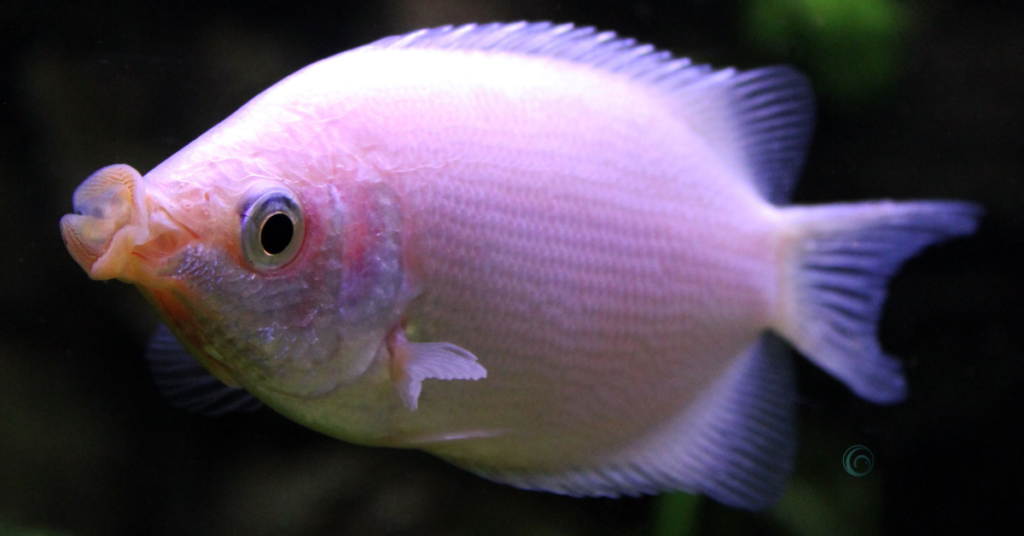
Gourami fish are also famous for their large lips and mouth. They are labyrinth species. These fish have bright colors and are famous for their unique shape. These include freshwater species and are native to the waters of Pakistan, India, Malaysia, Thailand, Indonesia, and the Philippines.
Gourami fish have slow movement and slow growth. And they live in slow-moving and shallow waters. They can live up to 8 years. Gourami have a territorial nature and become aggressive when anything teases them.
- Scientific Name: Trichogaster trichopterus
- Diet: Omnivores
- Size: 2 to 36 Inches
- Origin: Asia
Flowerhorn Cichlid
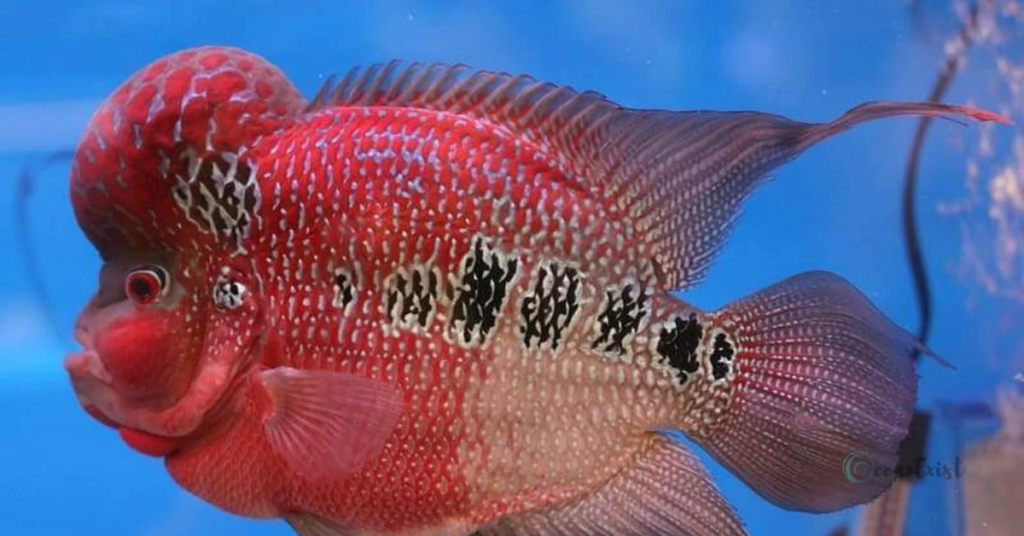
Flowerhorn cichlids are produced by selective breeding of Blood Parrot, Red Devil, and Tri Mac Cichlid. These fish have fairly big lips and large protruding heads and can be called as aquarium fish.
Flowerhorn cichlids come in different colors and patterns and have a beautiful appearance. The colors include red, purple, orange, pink, blue, gray, and yellow. These are not found in natural environments like rivers or oceans. Only breeders have them in their aquariums.
Flowerhorn is a good eater and intakes highly proteinous food, which includes shrimp, mosquito larvae, bloodworms, high-quality fish pellets, etc.
- Scientific Name: Amphilophus hybrid
- Diet: Omnivores
- Size: 10 to 12 Inches
- Origin: Central Asia
Sweetlips Fish
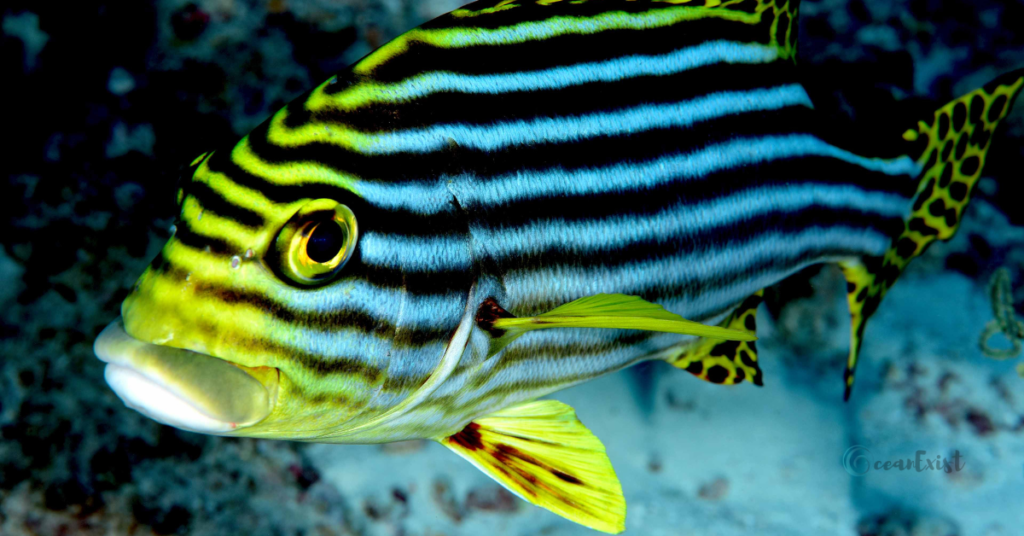
Sweetlips fish are famous for their big lips and large fleshy mouths. Their big lips are evolved as they suck food from the ocean surface. These are also known as dotted sweetlips, magpie sweetlips, painted sweetlips, and spotted sweetlips.
They have black spots on the dark brown to blackish dorsal fins. Sweetlip fish are known for their grunting sound, which is produced by grinding their teeth and swimbladder. They communicate with other fish with this sound.
Sweetlips are found in coral reefs and hide themselves inside the caves. Sweetlips fish are found in the Socotra, Seychelles, the Comoros Islands, Madagascar, and Mauritius east in the Pacific Ocean.
- Scientific Name: Plectorhinchus lineatus
- Diet: Carnivores
- Size: Up to 30 Inches
- Origin: Western Pacific
Common Pleco
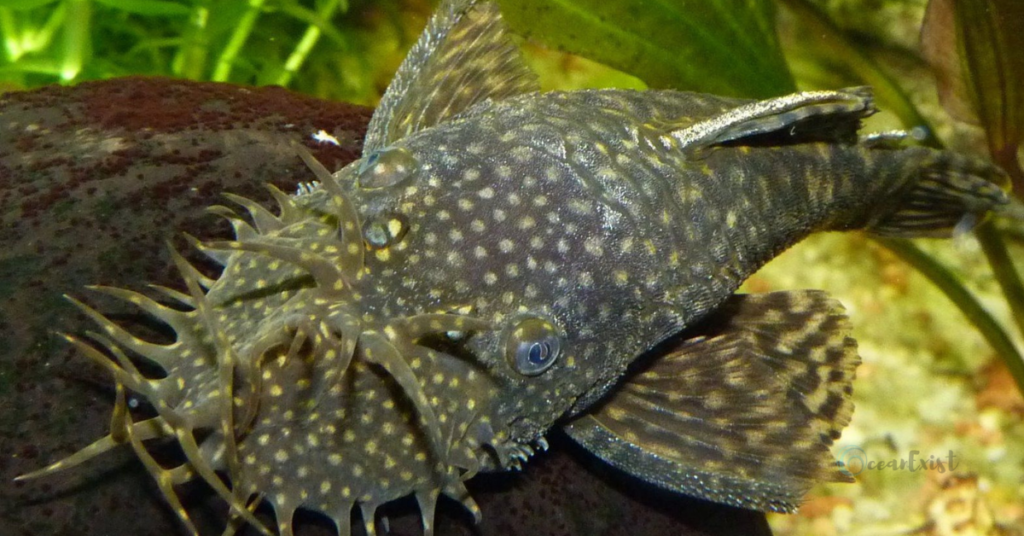
Common Pleco belongs to the catfish family. They are also named as Suckermouth catfish. Suckermouth grasps the algae from the rocky surfaces. They are omnivores and eat algae wafers, fresh algae, blanched vegetables, fish flakes or pellets, and live or frozen foods.
Common Pleco has dark markings that appear like a net on the deep brown, gray, olive-colored body. They can live for 10 to 15 years and are found in Brazil, the Guianas, and Trinidad, and Tobago.
- Scientific Name: Hypstomus plecostomus
- Diet: Omnivores
- Size: Up to 24 Inches
- Origin: South America
Marine Angelfish
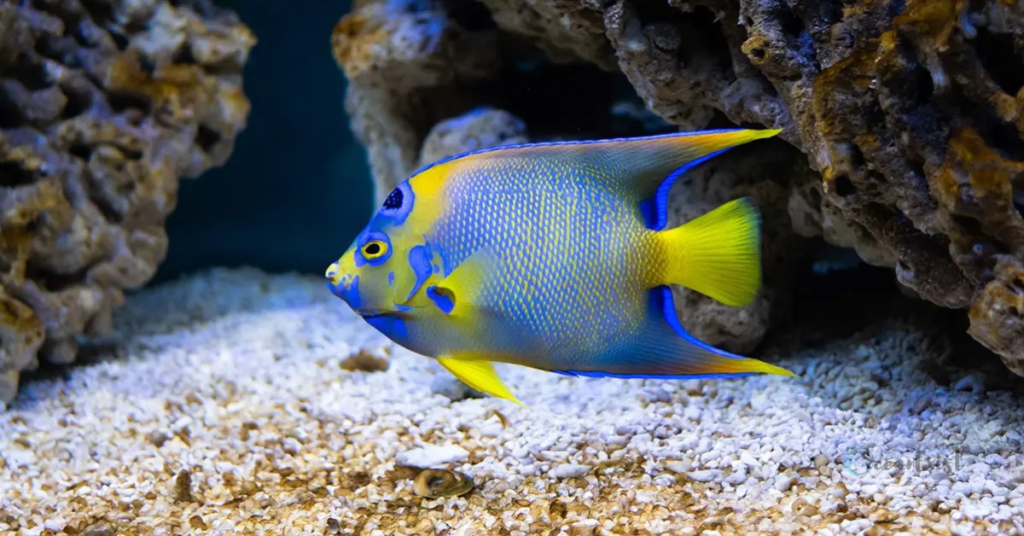
Marine Angelfish is also known as Saltwater Angelfish. Their mouths are quite large, and their lips are fatty. They have a range of colors and rainbow shades, which include bright green, brown, blue, and yellow. They are not only good-looking but also have good taste.
Marine Angelfish live in the coral reefs in shallow waters. They are found in waters of the Indian Ocean, Atlantic Ocean, and Pacific Ocean. A healthy Marine Angelfish can live up to 12 years. They survive on plankton, sponges, worms, plants, and various ocean vertebrates.
- Scientific Name: Pomacanthidae
- Diet: Omnivores
- Size: 8 to 12 Inches
- Origin: Indo-Pacific Ocean
Pacu
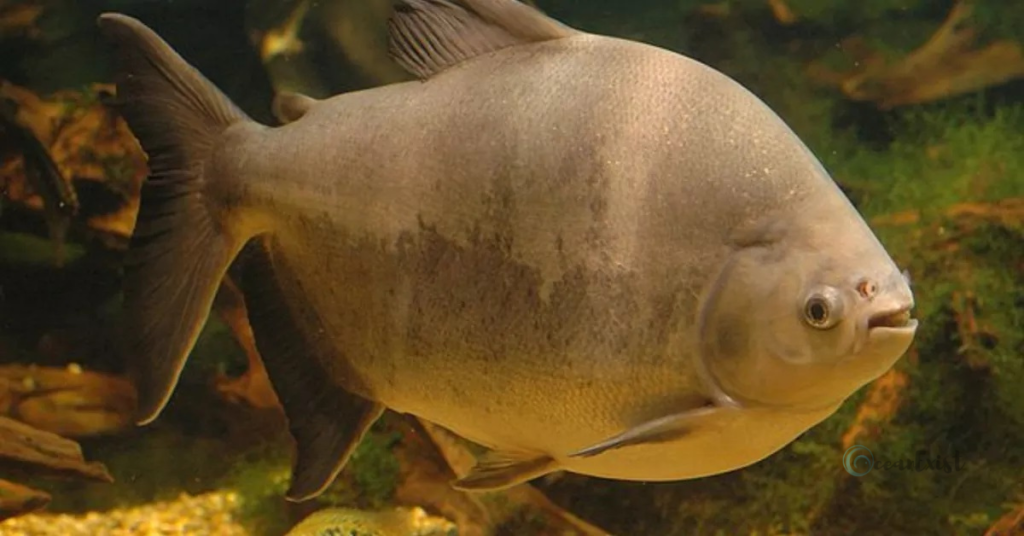
Pacu is also named Red Bellied Pacu or Pirapitinga. They have a characteristic plate-shaped body, square-shaped teeth, and big lips. It has a structure that is the shape of human teeth. They use this structure for eating vegetables or green plants. Their food includes fruits, seeds, decaying plants, grains, snails, and other fish species.
These fish are found in tropical and subtropical waters of South America. They can live for 25 years under proper care in an Aquarium and 15 years in a wild environment.
As Pacu fish eat too many vegetables, they are also known as vegetarian piranhas. They are good eaters, and their weight can grow to 25 kg.
- Scientific Name: Piaractus brachypomus
- Diet: Omnivores
- Size: 20 to 80 cm
- Origin: South America
Giant Grouper
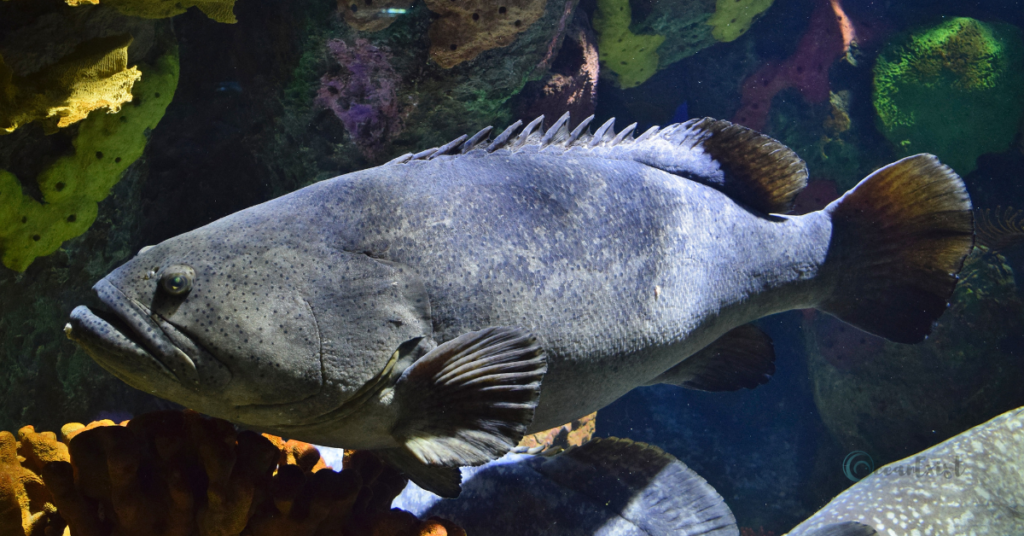
Giant Grouper is also known as Queensland Grouper or Bridle Grouper Giant. Groupers are a large-size fish species. Due to their impressively large lips and mouth, it has a creepy look. They have sturdy bodies and spotted fins with greenish-gray to dark-blue colors.
Giant Grouper are voracious eaters of crustaceans, lobsters, shrimps, crabs, stingrays, parrotfish, octopuses, and young turtles. They mostly live in coral reefs of tropical waters of the Western Atlantic Ocean from Florida to Brazil, the Gulf of Mexico, and Caribbean Sea, and the Eastern Pacific Ocean.
If they find a suitable diet and are in good health, they can live up to 40 years. Their weight can reach above 800 lb.
- Scientific Name: Epinephelus lanceolatus
- Diet: Carnivores
- Size: 96 Inches
- Origin: Western Pacific Ocean and Eastern Indian Ocean
Paddletail Snapper
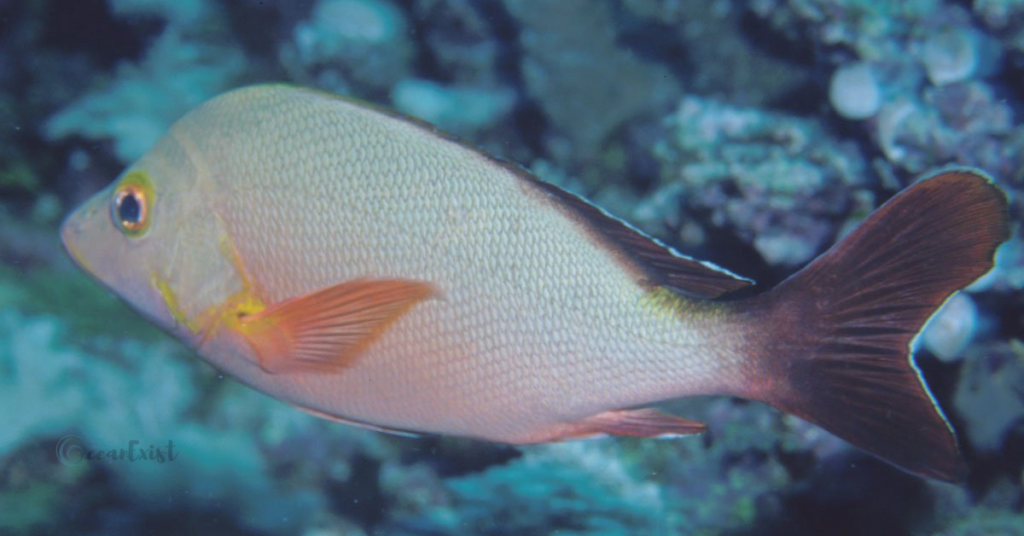
Paddletail Snappers are unique due to their big lips and distinctive colors. There are silver bodies with a tinge of yellow colors on their fins. Moreover, they have shark-like mouths, which make them dangerous.
With their large size and sucking and protruding lips, they can very easily prey on the smaller fish and crustaceans. Paddletail snappers are night hunters and remain serene and inactive during the day.
Paddletail Snappers thrive in coral reefs and lagoons of the water of Red Sea, East Africa.
- Scientific Name: Lutjanus gibbus
- Diet: Omnivores
- Size: 20 Inches
- Origin: Indo-Pacific Ocean
Carp
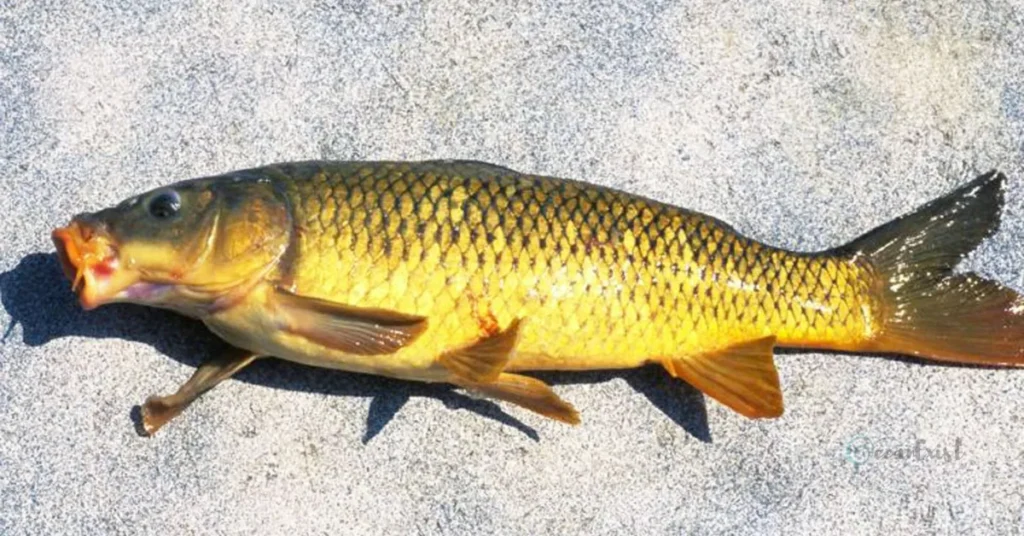
Carp fish have a messy, broad, and stocky body with unending appetites. They have large mouths with big lips. Their bodies are greenish brown.
Carp fish thrive in oily or muddy water because of their ability to survive in low oxygen levels.
Carps have very sensitive lips, which helps them find food. Their food includes insects, plants, and smaller fish.
- Scientific Name: Cyprinus carpio
- Diet: Omnivores
- Size: Up to 47 Inches
- Origin: Asia, Europe
Pufferfish
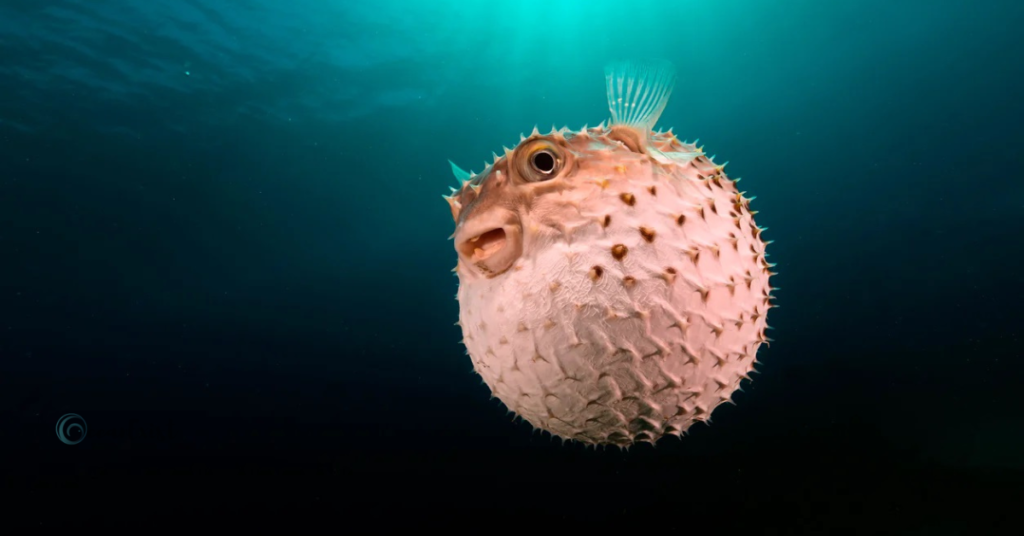
Pufferfish are named so because of their ability to inflate their body. They enlarge their bodies by swallowing water and air to protect themselves from predators.
Pufferfish are also known as Swellfish, Globefish, and Blowfish. These are not only famous for their large lips and mouth but also known for their large teeth.
Pufferfish survive on invertebrates, algae, shellfish, and mussels. And live up to 10 years.
- Scientific Name: Tetraodontidae
- Diet: Omnivores
- Size: Up to 26.4 Inches
- Origin: Europe
Triggerfish
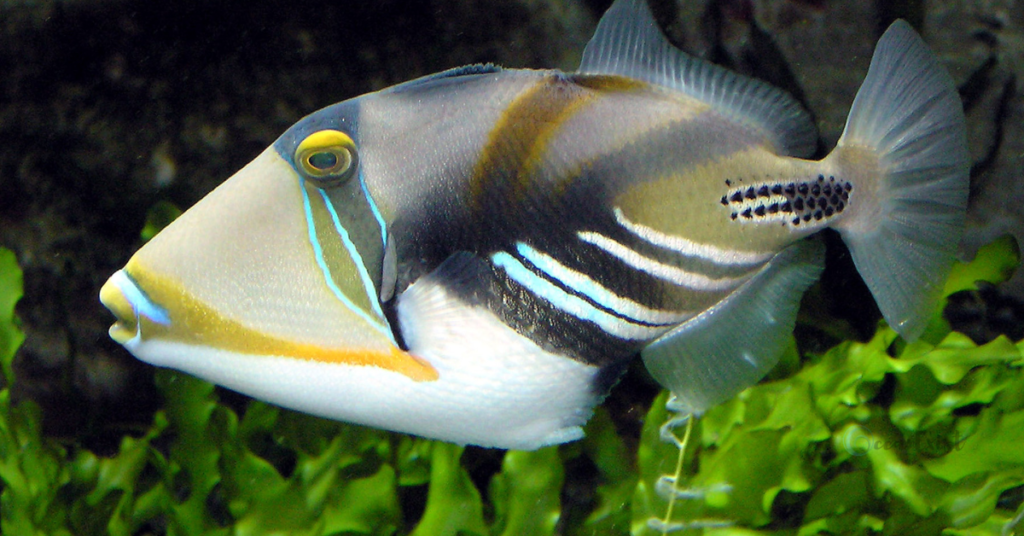
Triggerfish have unique artistic shapes and colors. They have attention-grabbing lips and a unique combination of blue, yellow, and black. Moreover, the spines are also a distinctive feature in these fish, which are present in their dorsal fins.
Because of their long spines, they can sometimes be trapped in narrow places.
Triggerfish are found in every type of water everywhere in all parts of the world but are mostly found in warm waters. During the mating season, they can become aggressive and territorial.
The powerful jaws and big lips help them to hunt and crush crustaceans, mollusks, small fish, urchins, and echinoderms.
Triggerfish can live for eight years in a wild environment, while when in captivity under proper care, they will survive up to 20 years.
- Scientific Name: Balistidae
- Diet: Omnivores
- Size: Up to 10 Inches
- Origin: Indo-Pacific Ocean
Largemouth Bass
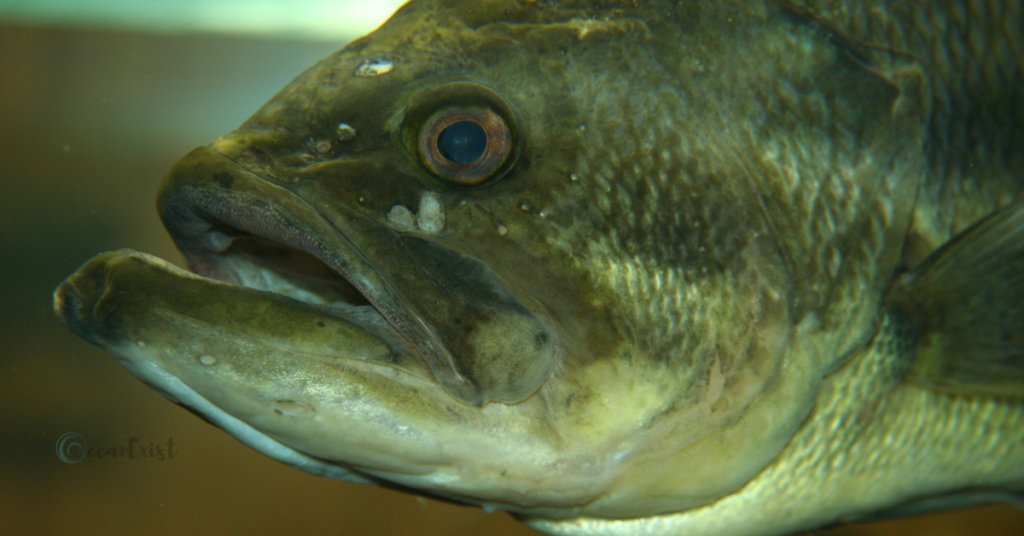
Largemouth Bass have olive-green to greenish-gray colored bodies. As their name suggests, they have large jaws and mouths with big lips. Anglers mostly fish for edible purposes.
Another distinctive feature of these fish is their way of hunting. These produce a vacuum and attract different small prey. In their large mouths, there are front teeth and pharyngeal teeth to catch and process the food. Due to these characteristics, these fish are called ambush predators and invasive species.
Largemouth Bass eat a large variety of diets, which includes baitfish, smaller fish, worms, snails, frogs, snakes, salamanders, etc.
- Scientific Name: Micropterus salmoides
- Diet: Carnivorous
- Size: Less than 2.5 feet
- Origin: North America
Lionfish
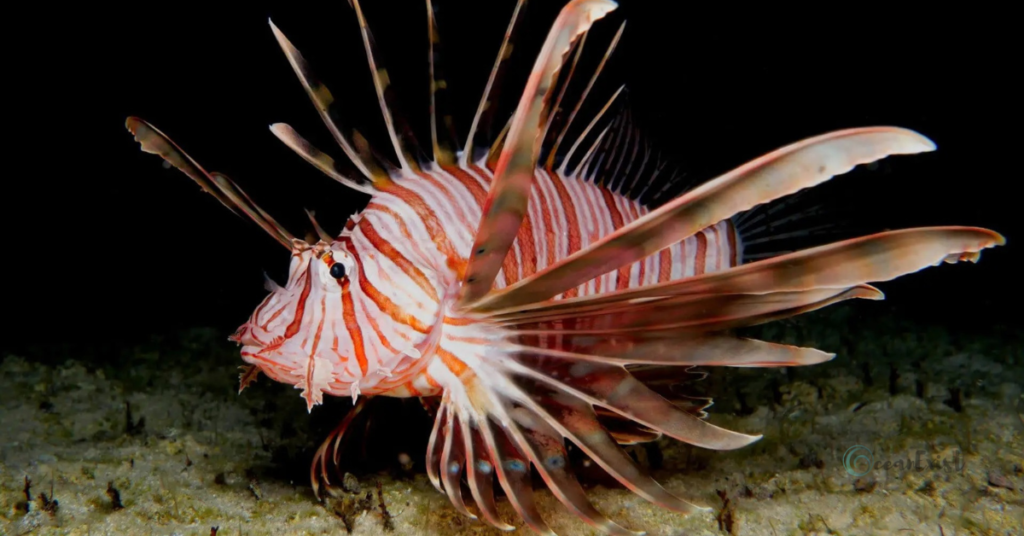
Lionfish is named so due to its invasive nature and unique appearance. The whole body is covered with straps of white, brown, or maroon color. There are fleshy tentacles above the eyes and below the mouth. The pectoral and dorsal fins of Lionfish are separated and lengthy.
Lionfish thrive in the reefs and eat different species of small fish, invertebrates, and mollusks. They are famous predators and compete with many other predator fish like snapper and grouper.
- Scientific Name: Pterois volitans
- Diet: Carnivores
- Size: Up to 15 Inches
- Origin: Indo-Pacific Region
Gulper Catfish
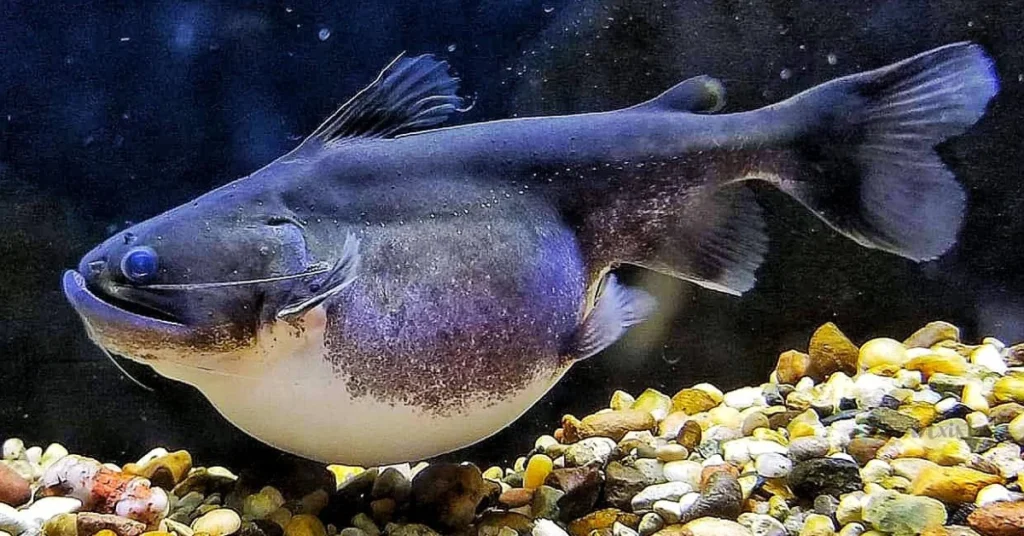
Gulper Catfish or Ogre Catfish are famous for their large mouths, which can engulf fish of the same size. Their mouth is pointed downwards to catch the prey from the surface. These fish have dark brown appearances. Gulperfish have large, thick, and fleshy lips with small teeth.
Gulper Catfish can live up to 20 years. Basically, they are from South America.
- Scientific Name: Asterophysus batches
- Diet: Carnivorous
- Size: Up to 10 Inches
- Origin: Venezuela
Stone Fish
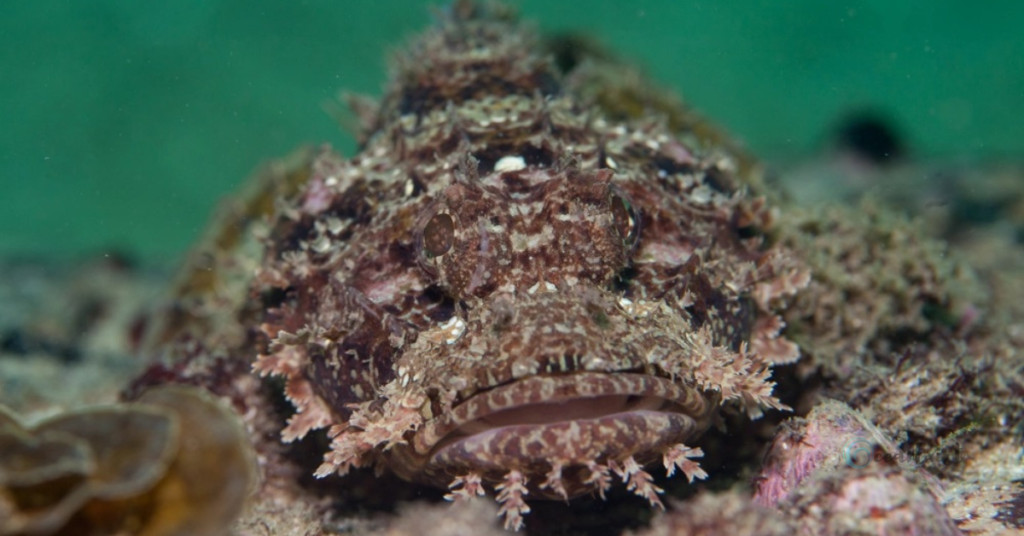
Stonefish appear as a rock or coral on the seabed. They can camouflage themselves due to their stonelike appearance. These are one of the scorpionfish types. These are the most deadly and venomous known species of fish. Stonefish have big lips, which are mostly concealed due to their stone-textured body.
Stonefish can eat small fish and crustaceans. They thrive in rivers and coral reefs of the tropical Pacific and Indian oceans. They can live up to 10 years, depending on their food and health.
- Scientific Name: Synanceia horrida
- Diet: Carnivores
- Size: Up to 16 Inches
- Origin: Indo-Pacific Region
Sarcastic Fringehead
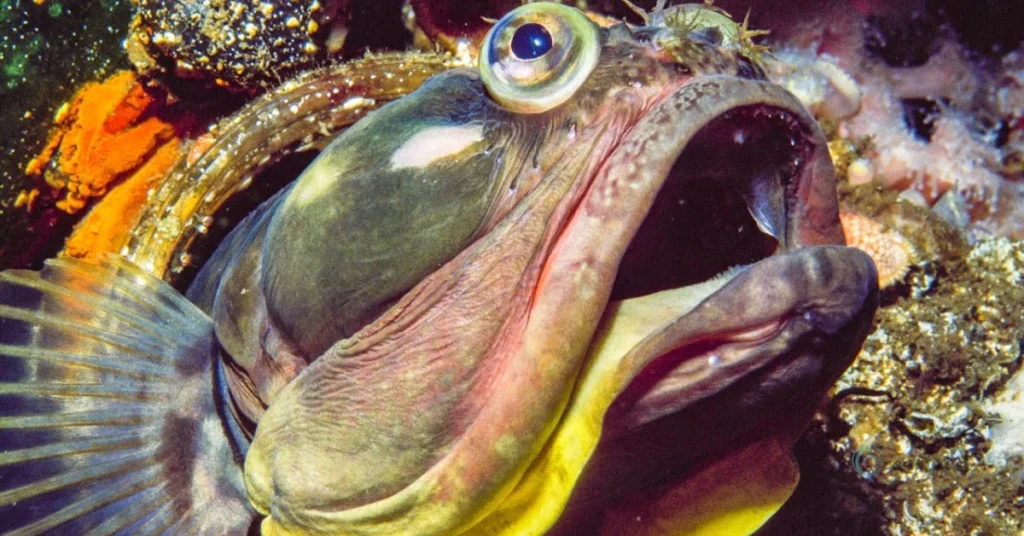
Sarcastic Fringehead is a saltwater fish. These fish have very intimidating shapes. They are considered fearless and aggressive fish. Sarcastic Fringehead fish have large, disproportionate mouths. Their bodies are long, slender and scaleless with shades of brown and green. Their pectoral fins are large, but their pelvic fins are small.
When they hunt or encounter any predator, they open their mouths, which become double in size. Their mouths develop the shape of a pentagon on opening and are bright at the edges.
Sarcastic Fringehead thrives in the waters of San Francisco, the bay south of Cedros, California, and Mexico. And they live up to six years.
- Scientific Name: Neoclinus Blanchard
- Diet: Carnivores
- Size: Up to 12 Inches
- Origin: Pacific coast of North America
Big Lip Damselfish
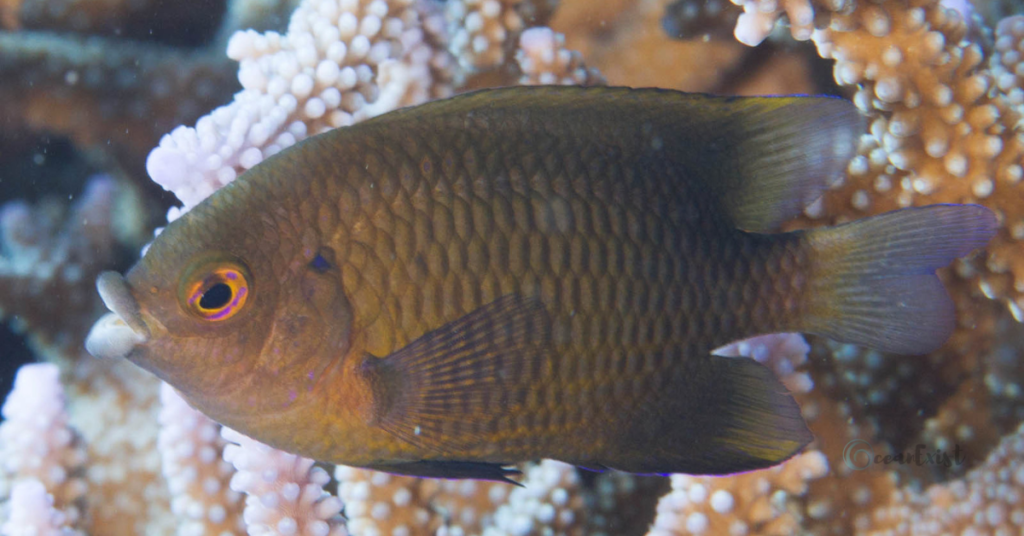
Big-lip Damselfish are included in ray-finned species of fish. They have evolved very large and round lips. Damselfish use their large lips to scrape the algae, coral, and other flora from the rocks.
Big-lip Damsel thrives in the shallow waters of the Eastern Indian Ocean and the Southwestern Pacific Ocean.
These fish also show aggressive and territorial behavior during their mating period.
- Scientific Name: Cheiloprion labiatus
- Diet: Omnivores
- Size: Up to 5.5 Inches
- Origin: Western Pacific
Here you have them:
- 20 Fish With Big Lips
- What Fish you liked most?
- Puffer Fish
Or
- Someone other?
- We like to listen to your answers in the comment section.
- You may like to read about Ugliest Fish
